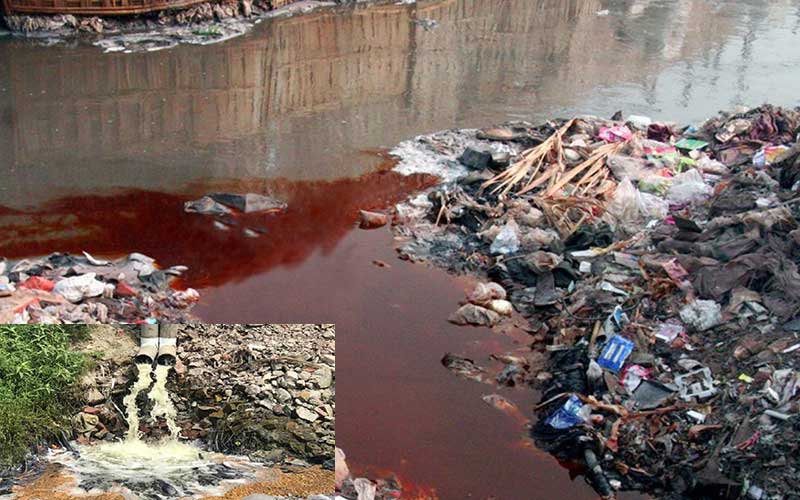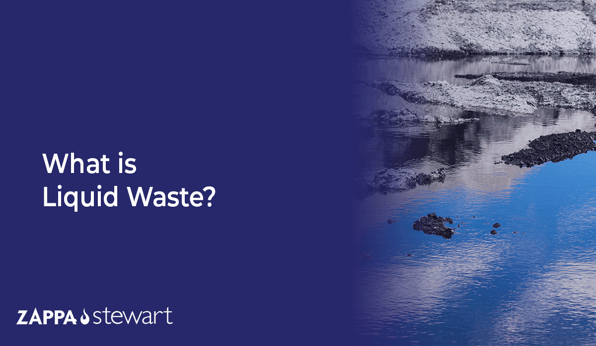Comprehensive Liquid Waste Disposal: Solutions for Residences and Businesses
Comprehensive Liquid Waste Disposal: Solutions for Residences and Businesses
Blog Article
Exactly How Fluid Waste Disposal Works: A Thorough Overview of Strategies and Technologies Employed

Summary of Fluid Waste Kind
The intricacy of liquid waste kinds necessitates a thorough understanding of their characteristics and effects for disposal. Liquid waste can extensively be classified right into numerous types, consisting of industrial, municipal, agricultural, and hazardous waste. Each category exhibits distinctive homes, requiring particular monitoring approaches to minimize environmental and health risks.
Industrial fluid waste originates from manufacturing procedures and often has an array of contaminants, such as heavy metals, solvents, and organic substances. Community fluid waste, primarily making up wastewater from homes and industrial facilities, contains raw material, nutrients, and pathogens (industrial wastewater treatment). Agricultural fluid waste, consisting of runoff from ranches, may have fertilizers, pesticides, and pet waste, positioning risks to water top quality and environments
Harmful fluid waste is characterized by its toxicity, reactivity, or potential to create injury. Comprehending these diverse liquid waste types is vital for establishing efficient disposal methods and guaranteeing compliance with ecological regulations.
Physical Treatment Approaches

Testing is the preliminary step, where larger particles and debris are removed from the fluid waste utilizing screens or grates. This process protects downstream equipment from damages and guarantees smoother procedure. Complying with testing, sedimentation utilizes gravitational pressure to separate solids from liquids. In sedimentation tanks, much heavier fragments clear up at the bottom, developing a sludge layer, while the made clear liquid can be further dealt with.
Filtering is another crucial technique that entails passing the liquid through permeable materials, such as sand or membrane layers, to catch smaller sized bits. This action improves the high quality of the liquid, making it suitable for succeeding treatment processes.

Chemical Therapy Methods
Chemical therapy methods are necessary for successfully taking care of fluid waste, particularly in attending to dissolved and colloidal pollutants that physical techniques might not appropriately remove. These methods make use of various chemical agents to neutralize, precipitate, or change hazardous compounds into less harmful forms.
One common approach is coagulation and flocculation, where chemicals such as alum or ferric chloride are included to promote the gathering of put on hold particles. This process improves sedimentation, enabling less complicated elimination of the resulting sludge. Additionally, oxidation procedures, using agents like chlorine or ozone, are utilized to break down intricate organic compounds and microorganisms, making the waste much safer for discharge or additional therapy.
Neutralization is another essential method, which changes the pH of acidic or alkaline waste streams to neutral degrees, avoiding possible injury to downstream systems and the atmosphere. Moreover, progressed oxidation processes (AOPs) make use of mixes of oxidants and ultraviolet light to deteriorate persistent contaminants, attaining a higher level of treatment performance.
Biological Therapy Processes
Biological treatment processes play a crucial function in the management of fluid waste by utilizing microbes to break down raw material and lower impurity levels. These processes can be generally classified into anaerobic and aerobic treatments, each using certain microbial neighborhoods to accomplish efficient waste destruction.
Cardiovascular therapy involves the usage of oxygen to assist in the break down of organic products by microorganisms. This procedure is commonly carried out in triggered sludge systems, where oygenation tanks offer a conducive setting for microbial development, causing the oxidation of natural toxins. The resultant biomass can be separated from dealt with effluent via sedimentation.
In comparison, anaerobic therapy happens in the lack of oxygen, depending on various microorganisms to damage down raw material. This approach is especially beneficial for high-strength waste, as it creates biogas, a renewable resource source, while lowering sludge manufacturing. Technologies such as anaerobic digesters are frequently employed in industrial and municipal applications.
Both anaerobic and aerobic biological therapies not only lessen the environmental effect of liquid waste however also help with source healing, making them crucial elements of lasting waste administration more helpful hints techniques. Their versatility, effectiveness, and effectiveness sustain their extensive implementation across different industries.
Emerging Technologies in Disposal
Ingenious techniques to fluid waste helpful site disposal are rapidly progressing, driven by improvements in innovation and a raising focus on sustainability. Among these arising technologies, membrane layer bioreactors (MBRs) have actually gained traction for their ability to incorporate biological therapy with membrane filtration, resulting in top quality effluent that can be reused in different applications. MBRs make it possible for smaller footprints and much more effective procedures contrasted to traditional systems.
One more promising development is the use of anaerobic digestion incorporated with nutrient recuperation modern technologies, which not only treats liquid waste however also generates biogas and recoups valuable nutrients like nitrogen and phosphorus. This dual see this website benefit boosts resource efficiency and minimizes environmental effect.
Furthermore, advanced oxidation procedures (AOPs) are being adopted for the degradation of intricate organic toxins. These methods use effective oxidants and stimulants to damage down contaminants at the molecular level, offering an extremely effective service for tough waste streams.
Additionally, the combination of man-made intelligence and equipment learning in waste administration systems is maximizing functional efficiency and anticipating upkeep, leading to minimized costs and enhanced ecological compliance. These innovations show a considerable change in the direction of even more effective and sustainable liquid waste disposal methods.
Final Thought
In final thought, reliable liquid waste disposal necessitates a detailed understanding of different methods and modern technologies. By constantly progressing these techniques, it comes to be feasible to attend to the growing difficulties linked with liquid waste, ultimately contributing to ecological security and resource recovery.
Liquid waste disposal is a vital element of ecological monitoring, calling for a comprehensive understanding of different strategies and modern technologies tailored to various waste kinds. Fluid waste can broadly be categorized into several kinds, consisting of industrial, local, farming, and dangerous waste. Agricultural fluid waste, including overflow from farms, may have plant foods, pesticides, and animal waste, posing risks to water top quality and environments.
Various physical therapy methods play a crucial duty in handling liquid waste efficiently - industrial wastewater treatment.In verdict, efficient fluid waste disposal requires a detailed understanding of numerous methods and innovations
Report this page